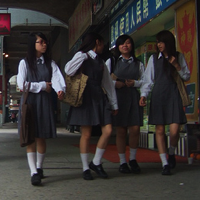On Oct. 31, the global population was estimated to have reached the 7 billion mark. On the eve of that momentous day, Li Bin, director of China’s State Population and Family Planning Commission, announced that China would retain its one-child fertility policy to do its part to slow world population growth. This news will have come as a bitter disappointment to the Chinese demographers and policymakers who have been calling for a relaxation of the one-child policy for several years. Wang Yuqing, the deputy director of the Chinese People's Political Consultative Conference Committee on Population, Natural Resources and the Environment, told the media in March that the committee was proposing that China move toward a two-child policy to begin in 2015. There were further proposals by leaders of Chinese provinces to move toward a two-child policy in coastal cities or in provinces with a large elderly population. Regrettably, it appears these progressive forces have lost a behind-the-scenes bureaucratic battle.
The Chinese one-child policy, initiated in 1979, was arguably the most ambitious attempt by a state to regulate fertility to reduce population growth. At that time, the Chinese population accounted for 25 percent of world population, a figure that has now fallen to 20 percent due to the strict measures employed to limit births in China. Most calculate the policy has prevented between 300 million and 400 million births since its announcement. The policy has never been absolute: While the one-child-per-couple rule is enforced in urban areas, couples in most rural areas are generally permitted two children when the first child is a girl, and births among ethnic minorities are exempted.
Slowing the growth in China’s population has not come without costs, however. Since the release of the November 2010 Chinese census, the media has focused on the decline in the number of potential workers coupled with the problem of a rapidly aging population -- 13.3 percent of China’s population is 60 years or older. However, China may face an even greater problem in terms of the persistent gender imbalance: Men outnumber women by 34 million, a figure the Chinese government predicts will rise to between 40 million and 50 million within the next two decades. The census further revealed that more than 118 males are born for every 100 females -- the standard ratio is 105 -- which is higher than the 116.9 ratio recorded in the 2000 census. This rise is almost solely due to the widespread use of sex-selective technologies to facilitate the birth of sons. Although prenatal sex-determination tests and sex-selective abortions are illegal except for medical purposes in China, there is a vibrant underground industry of mobile services offering both. While daughters are valued for the nurturing care they are seen to provide to elderly parents, marriage practices mean that they typically move away from their natal home. This means that rural families in particular aim to have at least one son to care for parents in old age as well as carry on the family name and perform rituals associated with ancestor worship.

